Decorative hawthorn
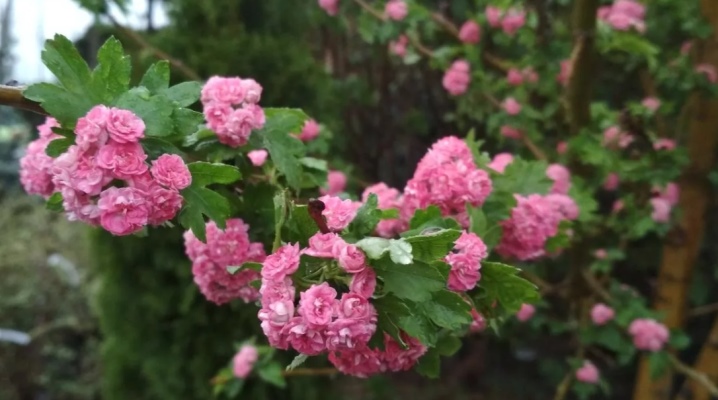
Ornamental hawthorn is a popular crop among flower growers that attracts attention with its bright colors and resistance to external influences.
Views
Ornamental hawthorn is a shrub for growing in the garden. Large size and attractive appearance are the key advantages of the plant. The appearance of culture is, in principle, familiar to almost everyone. Main characteristics:
-
name in Latin - Crataegus;
-
bushes - powerful, small;
-
thorns are sharp;
-
crown - rounded;
-
shoots - purple or red;
-
leaves are graceful, small in size, dark green in color.

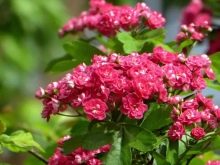

Interestingly, the thorns of the hawthorn are modified shoots. In the process of active growth, they are small in size and practically do not pose any danger. However, as the plant develops, the thorns from green change color to brown, become denser and more dangerous. The length of the thorn depends on the region where the hawthorn is grown, as well as the variety. On average, the indicator reaches 8-12 cm.It is worth noting that most plants have no thorns in principle, which simplifies the cultivation and care of the bush. The presence of thorns, on the other hand, requires caution.
The decorative hawthorn begins to bloom around May or June. The exact time depends on the region in which the plant is grown. Flowering is characterized by white or pink buds, the diameter of which reaches 3 cm.The flowers are placed in dense inflorescences-shields, which makes the shrub more lush.


Some types of hawthorn are distinguished by their double flowers. But, regardless of the species, the buds of the plant are characterized by attractive stamens and anthers. Another feature of the culture is abundant and bright flowering.
Today, many varieties of decorative hawthorn are known. Gardeners identify over a thousand different shrubs with which you can decorate your garden. The most popular varieties are worth considering.

Ordinary
The most common variety of decorative hawthorn, which attracts gardeners with abundant flowering and compact size. Other pluses of Crataegus laevigata include:
-
resistance to sudden gusts of wind, gas pollution;
-
availability;
-
versatility of use.


Hawthorn blooms from May or June, depending on the region of growth. Bush characteristics:
-
flowers - large, bright pink or white;
-
crown - lush, oval;
-
leaves - glossy, 3-5 lobes, bright green shade.
The shoots of the bush are quite powerful, which allows it to form large buds.


Blood red
Ornamental hawthorn with characteristic red fruits and abundant flowering. The main characteristics of the culture:
-
bushes are compact;
-
thorns are rather large, reach 4 cm in length, are rarely located;
-
flowers - white;
-
fruits - spherical;
-
leaves are medium in size, bright green.
The berries droop on thin stalks. The brown bark, which stands out even during the flowering of the hawthorn, is considered a special decoration of the variety. A few thorns do not pose a particular danger, so the variety is quite popular among gardeners.



Softish
Not the most common, but quite attractive variety with the following characteristics:
-
bushes are medium in size;
-
shoots are powerful;
-
flowers - delicate white, small;
-
fruits are orange with a dense skin;
-
leaves are glossy, from bright green in spring to rich orange in autumn.


Hawthorn berries are distinguished by tasty and juicy pulp, so the plant is often planted as a fruiting shrub. This variety is found mainly in regions of North America, but is also grown in Russian regions.
The thorns of the plant deserve special attention. They are small in size, do not pose a particular danger. The branches of the hawthorn are dense, due to which during the flowering period it is possible to achieve a lush and perfect crown without the need for pruning.

Monopest
Another popular variety of hawthorn, which is a tall and spreading shrub with juicy fruits and beautiful buds. Main characteristics:
-
bush - up to 2 m high;
-
crown - dense, lush;
-
shoots - strong, powerful, located close to each other;
-
flowers - white or pink delicate shade;
-
leaves are medium in size, dark green.
Hawthorn fruits have a light red hue and are distinguished by valuable medicinal properties. The one-fledged hawthorn can be pyramidal, pink or white terry. The shrub is grown mainly in large areas, planting along paths or fences.



Green meat
The peculiarity of this species lies in the dense and spherical crown, the density of which is much higher than that of the semi-soft hawthorn crown. Specifications:
-
thorns are short;
-
flowers - white, rarely purple;
-
shoots - powerful, able to withstand several buds;
-
leaves - rich green color, small in size, ovoid;
-
fruits are black.
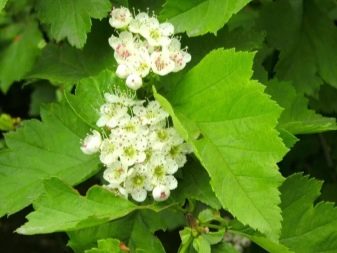

Hawthorn berries attract gardeners with their juicy taste and rich aroma. The bark of the plant is gray.
Gardeners pay special attention to the dense buds of the inflorescences, which hold the buds and prevent them from drooping. Dark anthers act as a bright accent, immediately indicating what kind of ornamental shrub it is. Landscapers often use the plant to decorate medium to small areas.

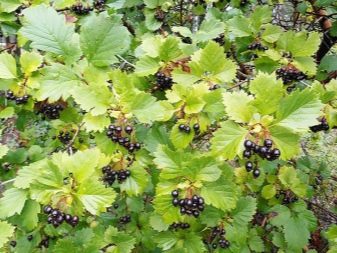
Daursky
Daurian hawthorn is a special decorative species with the following characteristics:
-
leaves are medium in size, dark green;
-
crown - compact, spherical;
-
shoots - dense, powerful;
-
the bark is red;
-
thorns are small, rare.
The cultivar forms white flowers. Anthers have a deep purple hue. This combination makes the shrub tender during flowering, for which it is appreciated by landscape designers.
At the end of the flowering period, fruits of a bright red hue, shaped like a sphere, appear on the branches. The berries have a rich flavor.



Pinned
A special type of decorative hawthorn, which is suitable both for individual planting and for creating entire hedges or unique landscape compositions from several plants. Specifications:
-
bushes - spreading type;
-
the bark is dense, gray;
-
thorns - small, rarely located;
-
leaves - pinnately dissected type with a bright green color.
During the flowering period, the variety produces large, pale pink or white flowers, and then forms bright fruits, the surface of which is decorated with small warts.
Using such a bush in the landscape would be an interesting solution.


Large prickly
The species stands out for its large thorns, for which it received such a name. The cultivar is an ideal candidate for a hedge when you need to fence, set off or cover an area. Specifications:
-
thorns - up to 12 cm long;
-
leaves are small, dark green, glossy;
-
branches - powerful, compact;
-
flowers - milky or pink.
At the end of flowering, the bush forms large fruits of bright colors, which stand out noticeably against the background of foliage.The pulp of the berries of this hawthorn is somewhat dry, so the variety is used mainly for decorative purposes.


Lavalieri
A popular variety that attracts gardeners with abundant flowering and large fruits. Specifications:
-
bushes - tall;
-
shoots - powerful, but dense;
-
leaf plates - rich green, medium-sized, glossy;
-
flowers - white and pink.
Towards the middle or the end of summer, the bush is covered with bright scarlet fruits, which looks quite impressive. The berries have a rich aroma and juicy taste.


Mordensky
Quite a controversial hybrid, which is considered one of the popular types of decorative hawthorn. Key characteristics include:
-
bushes are compact;
-
flowers - double, changing color from pink to white;
-
thorns - absent;
-
shoots - powerful, branching;
-
fruits are large and bright.
The berries do not have an amazing taste and aroma, therefore the main function of the hawthorn is decorative.


Other
There are also other varieties of decorative culture.
-
Hawthorn Wattian. A shrub with a height of 6-8 meters, which is ideal for creating natural fences. The variety has large spines and blue-colored leaf plates. During the flowering period, forms white flowers, which then become yellow berries.
-
Fan-shaped. It got its name due to the unique shape of the crown, which is formed by erect shoots and curved spines on their surface. The ovoid leaves have a rich green hue, the flowers are delicate white, the berries are bright but not juicy.
-
Douglas hawthorn. An ornamental variety, the peculiarity of which lies in the dark bark, devoid of thorns. The view is ideal for planting in areas where children often play. The leaves of the hawthorn are dark green, the flowers are white, and the fruits have a purple-black hue.
-
Hawthorn Maximovich. Domestic type of decorative culture, which also does not have thorns. Other features include ovoid leaves and gray-brown branches. The flowers are white, the fruits are unattractive.
If we consider the southern regions of the country, then the gaze can be stopped at the pear hawthorn. Its leaves have an original shape, the thorns reach a length of 5 cm, and the fruits attract attention with bright colors.


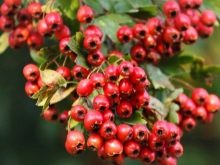
Care
Decorative hawthorn is unpretentious in care, if you approach the planting culture correctly in advance. Basic recommendations.
-
It is recommended to plant a bush in sunny places. The plant blooms worse if it is in the shade.
-
The soil must be fertile, and the water table must be low, otherwise a drainage device is required. If this is not foreseen, the roots of the plant will wither and it will die.
-
It is recommended to fertilize with lime twice a year of planting.
-
At a young age, regular pruning of the bush is required in order to create the ideal crown shape.
The hawthorn requires special attention only in the first 2 years. Once the plant has adapted, the main care will be to fertilize regularly during the spring and fall seasons. Basically, organic compounds in the form of mullein or wood ash are used as top dressing.
And you will also need to take care of the timely watering of the plant. Usually, the shrub needs no more than 1-2 waterings per week.

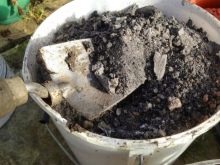
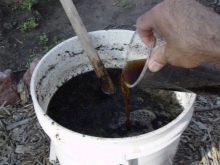
Use in landscape design
The decorative hawthorn is popular with landscape designers. Such shrubs are often found in garden plots, with their help they arrange unique compositions, plant greenery on both small and medium-sized, large areas. The main advantage of the decorative hawthorn is its compact size, which does not take up much space, but at the same time does not look inconspicuous.
The decorative hawthorn is often used as:
-
berry bush - the plant attracts attention with bright and edible fruits;
-
deciduous bush - a spectacular autumn crown will not leave anyone indifferent, such plants are planted along the paths;
-
flowering culture - the plant will delight with large flowers of delicate colors.



Hawthorn looks good in both group and single plantings. The culture is grown mainly in the form of a tree or trunk. If you classify shrubs by location in the garden, then they are used for the device:
-
hedges;
-
undergrowth or forest edge;
-
alleys;
-
background shrubs.
Hawthorn is also planted next to evergreen trees to create attractive landscapes. If necessary, the bushes are formed by cutting off too long and uneven shoots.
An additional property of hawthorn is the protection of the surrounding area from the wind. And also the bushes were often used to mask the surrounding area or create screens.
Finally, the hawthorn is liked by honey insects. Therefore, the plant is often planted within apiaries to organize effective reproduction and development of bees. Birds also prefer to feast on the fruits of the shrub, which additionally use hawthorns to shelter their nests.




































































The comment was sent successfully.